A wise man from China observed that in the US you can change the party but you cannot change state policy. In China you cannot change the party but you can change state policy. The Chinese government is much more sensitive to the will of the people. In the west the people are ignored apart from those brief periods called elections where they are all lied to. -Sushi | Jul 12 2022 16:18 utc | 30
Coming clean while the world is covered in filth. Yes. The American led world order is over. The Western societies are now collapsed, the governments are running around and acting completely crazy, and yes. Here we are. Brace for impact.
The American led world order is over.
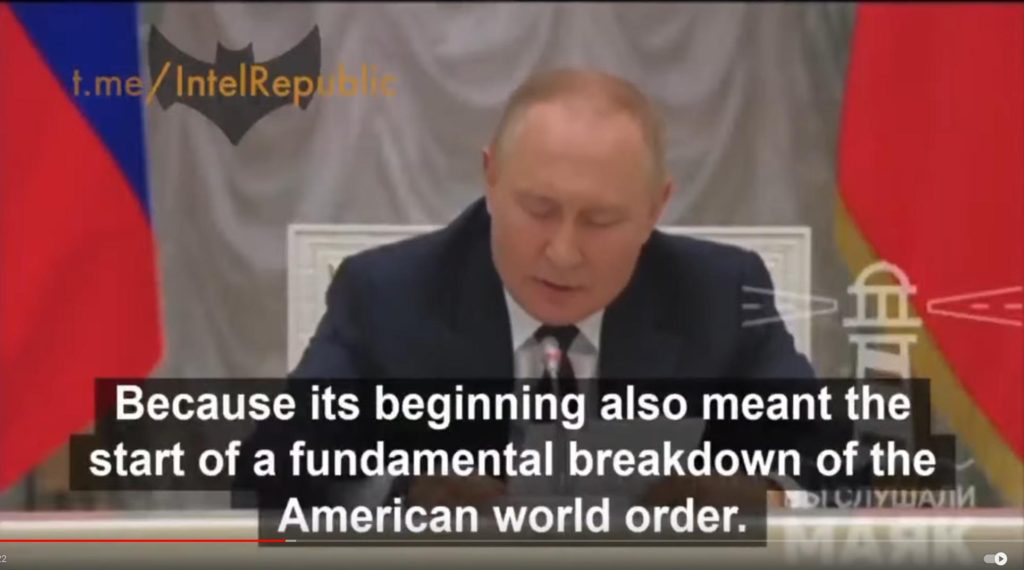
Make sure that you have a wood stove. Have wood. Solar panels. Try canning and make sure that you have a water filter, and a fully stocked larder.
Now, just move forward and enjoy this post.
The Superb Provocative Digital Art By Doping-Pong

Based in Saint-Petersburg, Russia, Doping-Pong is a digital art-project started in 1997 by Dima Mishenin, Lova and Anna Maugli. Doping Pong are the pioneers of digital art in Russia.
The digital art world of Doping Pong is incredibly diverse. It is closely linked to contemporary visual culture and pop aesthetics. In the 90ties, te first digital works of Doping Pong were featured in popular youth magazines “Ptyuch” and “Om”. The late works of Doping-Pong are inspired by a realistic tradition, in which there is a place for both heroism in the spirit of socialist realism and everyday, idyllic romance of the late 60s.











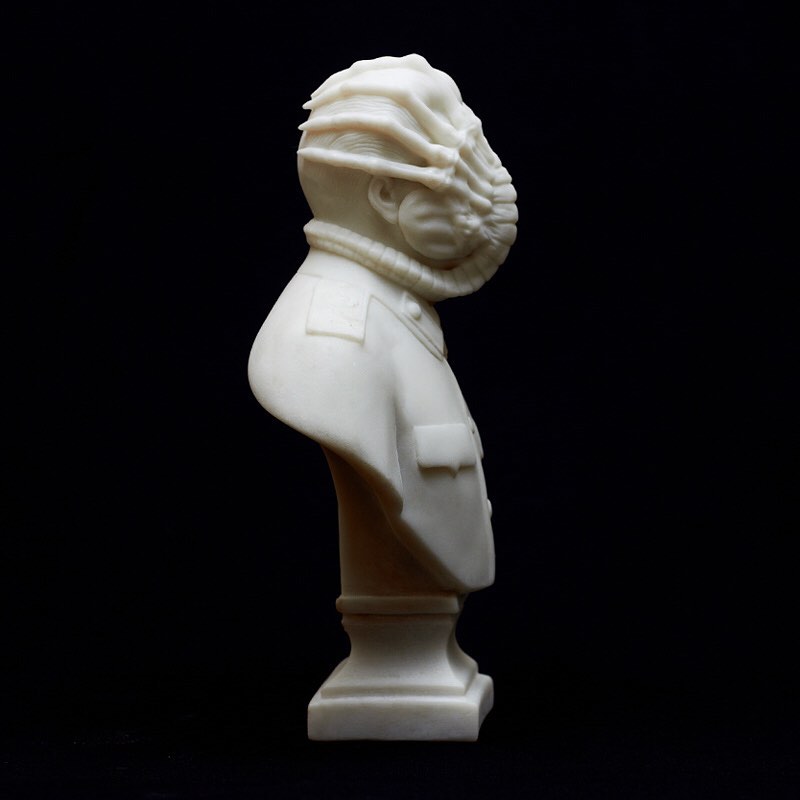



The American led world order is over.
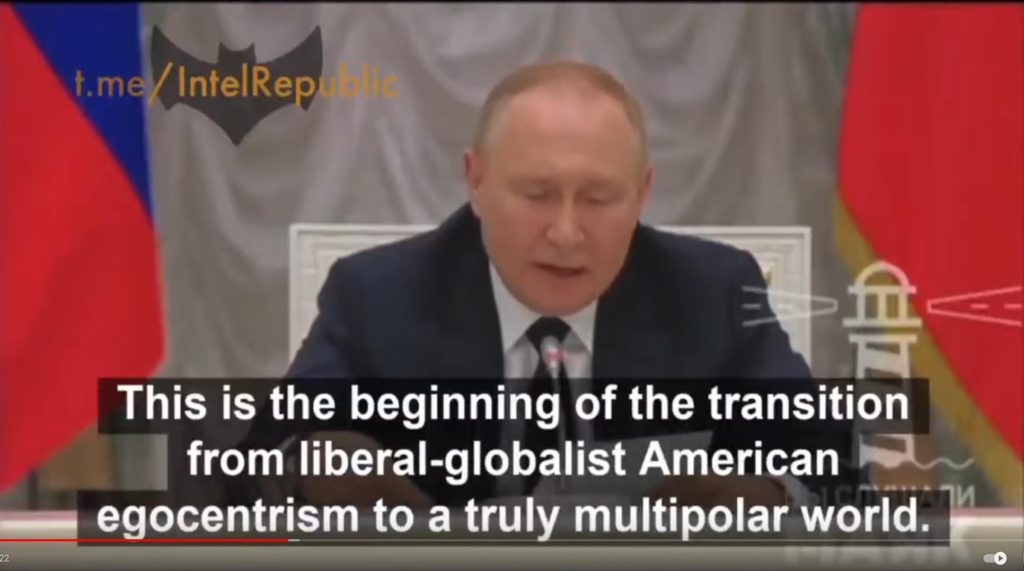
Calm Before the Tempest?
Let’s start by stipulating the obvious: no one knows the future, and most of the guesses–oops, I mean forecasts–will be wrong. Arguing about the forecasts now won’t make any difference as to which ones are correct and which ones are wrong. Time alone will tell.
That said, here’s a scenario that fits the dynamics I see as most consequential: Core-Periphery and the demise of the waste is growth / financialization / globalization model as the reigning model of how the global economy should work.
Core-periphery dynamics are pretty simple: unraveling starts on the periphery and seeps toward the core. The core actually strengthens in the process as capital and talent seek havens where they’re treated well, and the core became the core by treating capital and talent well.
The periphery responds to the unraveling of financialization / globalization by tightening its grip on whatever capital and talent is still available, incentivizing the flight of capital and talent to the core.
A great many people think there are many core economies. In my analysis, there is only one, due to the qualifying requirements: 1) issues a reserve currency, i.e. not pegged to another currency 2) liquid global markets for securities, debt, commodities, etc., i.e. anyone anywhere can trade in size in the core markets 3) transparent market and governance mechanisms, i.e. no overnight devaluations, expropriations, capital restrictions, etc. 4) diverse economy not dependent on exports or imports for its well-being and 5) ease of flow: capital, talent, enterprises and employees all have essentially unlimited freedom of movement within the core.
We can argue about which nations qualify as core but it won’t change the outcome. Capital and talent will make their own decisions about risk, safety, exposure to devaluation and expropriation and where the odds of being treated fairly are highest. It’s a good exercise to put yourself in the shoes of a manager of a $10 billion fund and go through the decision tree of where to put this $10 billion to preserve its purchasing power first and foremost, and secondarily generate a return.
Would you really gamble $10 billion on a 15% return on the bonds of Timbukthree, whose currency has fallen 20% against the U.S. dollar this year? Or Timbukfour, which is dependent on exports of commodities in a shrinking global economy? Or Timbukfive, which is dependent on imports of commodities and exports of consumer goods in a shrinking global economy?? If you answer “yes,” you’re not actually playing like you are responsible for $10 billion.
As the periphery unravels financially, it also unravels politically and socially. Bordering states are at risk of destabilizing, and any entity with large exposure to the unraveling debt or markets starts unraveling, too. The destabilization spreads to second-tier nations whose exposure to the dynamics of unraveling are structural.
As all these dominoes fall, eventually those closest to the core also crumble, and then core itself is finally destabilized.
Humans have an interesting talent for adjusting to new circumstances, i.e. habituating to new conditions. Those households consuming 14,000 gallons of fresh water a month may well scream that they can’t possibly get by on 12,000 gallons, but then if circumstances change and all the water we have is what we can carry in buckets a kilometer over rough terrain, we find that we can live on the few gallons we can carry a kilometer.
The amount of waste in developed economies is beyond easy measure. It’s estimated 40% of all food in the U.S. is wasted. Energy, food and fresh water have been treated as if low cost and abundance were birthrights rather than brief explosions of excess. While we’re screaming about energy costs, empty buildings are brightly lit, water taps are left running and one individual per idling vehicle in a traffic jam frets about rising costs.
When the 1989 Loma Prieta earthquake closed the Bay Bridge across San Francisco Bay, the main artery between San Francisco and the East Bay, economic doom was predictably predicted. Yet people quickly managed via extra BART (subway) trains that rain beneath the Bay and carpools with four people per vehicle rather than one occupant.
Is it possible that all the predictable predictions of economic doom are somewhat exaggerated by the thrill of sensationalism and projections of past trends, as if people can’t possibly make consequential adjustments to their behaviors and consumption?
Systems have constraints, and so there are limits on what adjustments can be made without altering the structure, but in many cases, we’re far from reaching limits on basic conservation work-arounds.
Is it possible that things will prove less dire than currently expected? It seems little credence is being given to the potential to adjust to new conditions.
Is it beyond conception that the core actually strengthens for a length of time before the unraveling reaches it? In my crystal ball, it seems not just possible but likely. This will be the calm before The Tempest, when the unraveling reaches the core and structural changes are finally required.
New York City Begins Preparing Population for NUCLEAR ATTACK
The New York City Office of Emergency Management has issued a video TRAINING NEW YORKERS FOR WHAT TO DO WHEN A NUCLEAR BOMB HITS.
The ninety second video was released this morning, July 11, 2022, appears below. It is widely believed they have put out this video because THEY KNOW what’s coming . . . . because it is the government that intends to cause it.
They are pushing Russia so far with economic sanctions over Ukraine, that the Russians will have no choice but to launch a full nuclear attack because what we are doing is now an existential threat to Russia.
Rather than stop what we’re doing, they intend to keep pushing and THEY KNOW what the result will be.
Here’s the video:
IDIOCY
In the video, they tell New Yorkers to get inside. Good advice . . . if there’s anything left standing to actually get inside of!
Then, in the height of utter stupidity, they tell New Yorkers “If you were outside when the blast hit, take off all clothes, shower and shampoo to wash the radiation off immediately.” THERE WON’T BE ANY RUNNING WATER. The water mains will all be ruptured from the blast and the electric that powers the water pumps will all be off for miles.
But wait, there’s more . . . idiocy . . . . they tell New Yorkers “stay tuned to local media and don’t go outside until authorities tell you it’s safe.” THERE WON’T BE ANY LOCAL MEDIA. It will all be blown up. All the TV and radio transmitters will be wiped out!
As if to add insult to injury, they tell New Yorkers “Sign up to NYC-alerts” (with your cell phone). . . THERE WON’T BE ANY CELL PHONE SERVICE. The towers will all be knocked down, the transmitters fried by electro-magnetic pulse, and the electric will all be out. THERE WON’T BE ANY INTERNET SERVICE. All the Internet lines will be blown up and the wireless all offline from EMP or no electricity!!!
THEY KNOW WHAT’S COMING
Government does not do things like this for no reason. In this case, THEY KNOW what’s coming because it is government that is causing it.
They’ve been planning a “take-down” of Russia, for decades. They expanded NATO when they promised Russia they would not move “one inch eastward” upon the re-unification of East and West Germany. They broke that promise in stages, moving little by little closer to Russia’s borders.
When they got to Ukraine, they wooed then-President Viktor Yanukovich with promises of riches and wealth for Ukraine if they departed from Russia’s sphere of influence, and joined Europe and the United States sphere of influence.
Yanukovich thought about it. He consulted with his government officials. He spoke to businesses in Ukraine. He spoke with many average Ukrainians. In 2013, Yanukovich told Europe and America “Thanks, but NO THANKS.” Well, that was an answer that Europe and America just wouldn’t accept.
So the US and Europe began pouring money into Ukraine to foment and facilitate violent protests; riots in every major city. Within a year, in 2014, rioters burned government buildings. Snipers were shooting people on both sides to foment more violence. It got so bad, that Yanukovich had to flee the country and the Ukraine government collapsed.
Who was right there to finance new political candidates? Europe and America. So they were able to install a puppet government favorable to the West.
When Russia saw this taking place, they were stunned. This was happening right at their own border. The west was overthrowing Ukraine’s government because they need Ukraine in NATO. You see, they want to put American missile defenses on Ukraine territory. By positioning our missiles there, they would have a flight time of only about five minutes to Moscow. They would also have a flight time of only 7-8 minutes to Russia’s strategic nuclear missile silos.
Russia had to act in its own defense.
They did what our own President, John F. Kennedy did, when Kennedy found out the then-Soviet Union had placed medium range and intermediate range nuclear missiles in Cuba, with a flight time of only 5 minutes to Washington, DC: Kennedy blockaded Cuba and began massing troops for an invasion.
Thankfully, both sides negotiated a peaceful settlement to what became known as the “Cuban Missile Crisis.” That was in 1962-63.
Today, the situation is exactly reversed; it is the West trying to put missiles within 5 minutes flight time of Moscow, and Russia said No.
When Ukraine decided they were actually going to join NATO, and allow those missiles . . . and even began preparing for a NATO naval base on the Black Sea, Russia had enough.
By November of last year, NATO had trained the Ukraine Army for eight years under the West-installed puppet government. The Ukrainians had also massed about 80,000 troops on the borders of the eastern states of Luhansk and Donetsk (collectively called “The Donbas”) – and both states directly border Russia. So Russia knew Ukraine was prepping its military and its land for a confrontation. Russia thus had to strike first. Russia entered Ukraine on February 24, 2022.
Instead of backing off, the West upped-the-ante . . . they imposed crippling economic sanctions upon Russia specifically designed to crush Russia’s economy. The sanctions backfired and are harming the west more than harming Russia.
So what is the west doing now . . . . massing troops in NATO countries along Russia’s border.
Russia has said that if NATO and Russia go to war, NATO has superior conventional forces. Russia admits that. But Russia also said “Russia is a nuclear power and Russian nuclear forces are superior to NATO.” President Vladimir Putin said publicly, “It will be a war that no one will win.”
The only war that “no one will win” is a nuclear war.
NOW, the NYC Office of Emergency Management is publicly telling New Yorkers what to do when a nuclear bomb hits.
WHY?
Because they know what’s coming . . . . because our own government is the cause of it. That’s why, in the first few seconds of the video above, they actually tell you ‘don’t ask why, or how . . . .” BECAUSE IF YOU START ASKING WHY, YOU’LL FIGURE OUT THAT IT IS OUR GOVERNMENT THAT IS CAUSING THIS! ! ! ! !
It is now clear that the US intends to engage in a nuclear war with Russia. THAT is why NYC OEM is putting out these warnings.
HAL TURNER EDITORIAL OPINION
I cannot even begin to describe to you, the heat I have taken over the past few months, for warning my web site visitors and radio audience that nukes are going to fly.
I was called “crazy” by the public. My stories were smeared as “click bait.” My sources were derided as “fear mongers.” My radio show was attacked as “scaring the public.”
So now that the New York City Office of Emergency Management is actually telling New Yorkers what to do when a nuclear bomb hits, I wonder if folks might figure out that I’ve been right all along?
Skirt Steak
As delicious as a Bloody Mary is as a drink, it makes an even better marinade. That’s because the mix of sweet and salty from the tomato juice, the heat from the horseradish and Tabasco, and the acid from the lemon work together to both tenderize and energize an otherwise normal piece of beef. This marinade could do magic on chicken and pork as well, but the bold flavors of a Bloody seem to pair best with a hunk of grilled beef. Serve with grilled asparagus and roasted potatoes for a near-perfect meal. It is an easy brunch or simple dinner idea when you want a nice mix of protein, vegetables, and healthy carbs. Plus, it requires very minimal prep work for a big boost in flavor.
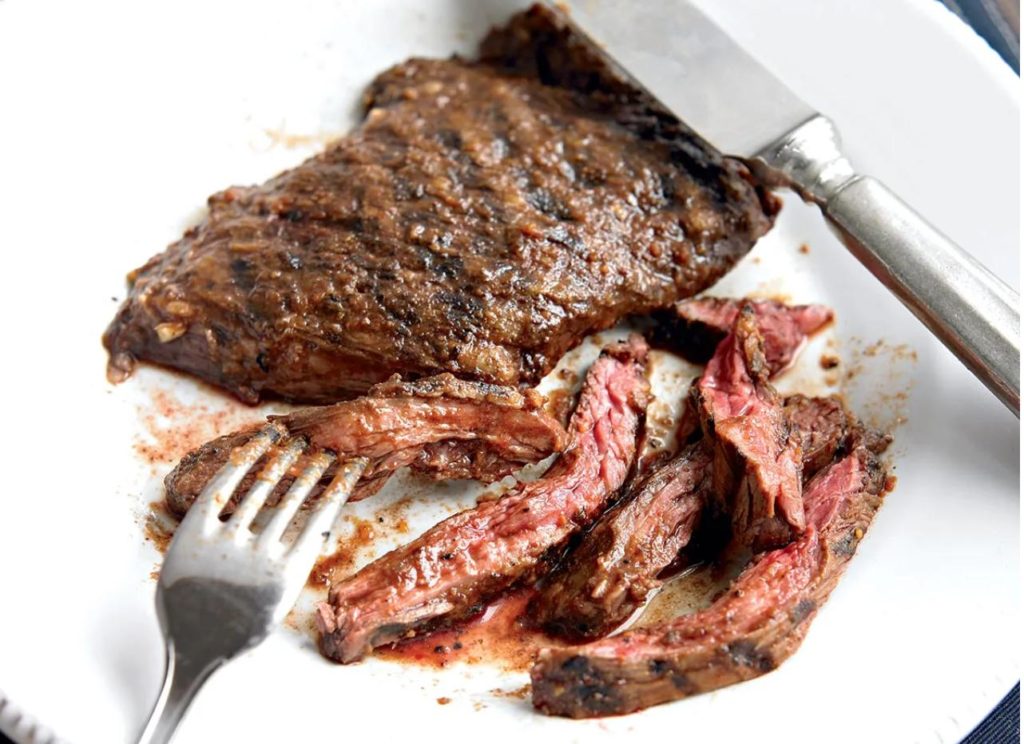
You’ll Need
2 cups tomato juice (spicy V8 works best)
2 Tbsp prepared horseradish
4 cloves garlic, minced
Juice of 1 lemon
1⁄2 Tbsp Worcestershire sauce
10–15 shakes Tabasco sauce
Black pepper to taste
1 lb skirt or flank steak
How to Make It
- Combine the tomato juice, horseradish, garlic, lemon juice, Worcestershire, Tabasco, and pepper in a baking dish and use a whisk to thoroughly mix.
- Add the steak and turn to coat.
- Cover with plastic wrap. Marinate in the refrigerator for at least 2 hours or up to 12.
- Preheat a grill.
- Pour off the marinade and discard.
- Use a paper towel to pat most of the marinade from the steak.
- When the grill is very hot, add the steak and cook for 3 to 4 minutes per side for medium-rare.
- Let the meat rest for at least 5 minutes before cutting into thin slices against the grain of the meat.
Eat This Tip
Skirt and flank steak are both thin cuts of beef that offer huge flavor and a pleasantly chewy texture at a relatively cheap price tag. Because they’re thin, you’ll want a very hot grill to ensure you develop a nice char before the interior is overcooked, so keep that in mind when you fire up the grill!
No, Iran Will Not Deliver Armed Drones To Russia
In March this year we were treated to an onslaught of obviously false claims that China would deliver weapons to Russia for the fight in Ukraine.
Russia seeks military equipment and aid from China, U.S. officials say – Washington Post – March 13, 2022
Russia has turned to China for military equipment and aid in the weeks since it began its invasion of Ukraine, U.S. officials familiar with the matter told The Washington Post. The officials, who spoke on the condition of anonymity because of the sensitivity of the subject, did not describe what kind of weaponry had been requested, or whether they know how China responded. The development comes as White House national security adviser Jake Sullivan plans to travel to Rome on Monday to meet with his Chinese counterpart, Yang Jiechi. “We are communicating directly, privately to Beijing, that there will absolutely be consequences for large-scale sanctions, evasion efforts or support to Russia to backfill them,” Sullivan told CNN.
Russia is an exporter of military weapons and China is one of its biggest customers. There is nothing in the Chinese arsenals that Russia can not and does not produce itself.
The claim was false from the get go but Sullivan, the mediocre National Security Advisor of the Biden regime, planted it to put pressure on China. It of course did not work.
China denied that it had received any request from Russia or that it was in any way willing to ever fulfill one if it would come:
- China Signals Disinterest in Providing Weapons to Russia for Brutal Ukraine Campaign – MSN – Mar 14, 2022
- China Insists It Won’t Help Sustain Russia’s War Against Ukraine – Newsweek, Mar 17, 2022
- China denies sending weapons to support Moscow – Guardian – Mar 21, 2022
- Chinese Defense Ministry denies ever handing over weapons to Russia – Yahoo – Jun 13, 2022
No Chinese weapons have been seen in Ukraine.
Now an equally stupid claim was launched by the very same liar who launched the fake Chinese weapons claim.
White House: Iran set to deliver armed drones to Russia – AP – Jul 7, 2022
The White House on Monday said it believes Russia is turning to Iran to provide it with “hundreds” of unmanned aerial vehicles, including weapons-capable drones, for use in its ongoing war in Ukraine. U.S. National Security Adviser Jake Sullivan said it was unclear whether Iran had already provided any of the unmanned systems to Russia, but said the U.S. has “information” that indicates Iran is preparing to train Russian forces to use them as soon as this month. “Our information indicates that the Iranian government is preparing to provide Russia with up to several hundred UAVs, including weapons-capable UAVs on an expedited timeline,” he told reporters Monday.
Russia has for some time build mass production facilities for its own drones.
- Russia Reveals New Drone Capabilities, Hinting At What It Could Bring To Bear In Ukraine – Forbes– Dec 23, 2021
- Drone production facility outside Moscow to get into top gear – TASS – Feb 1, 2022
- Russia was lagging behind in drone capabilities, but is now catching up – comment – LTR – Mar 18, 2022
A decade ago, the Russian Armed Forces possessed fewer than 200 UAVs, and now this figure stands at over 2000, and each year is replenished by 300. Furthermore, the Russian defence industry is conducting R&D on the application of artificial intelligence (AI) in UAVs, with the ambition of enabling them to perform as unified “swarms of drones” in combat zones. Sources claim that this was already tested in 2020, during the Kavkaz-2020 military exercise.
Russia has absolutely no need to buy drones from Iran. Besides that it is dubious that Iran would be able to deliver some and certainly not ‘several hundreds’.
Gregg Carlstrom - @glcarlstrom - 6:18 UTC · Jul 12, 2022 Does Iran even have "hundreds of weapons-capable drones" to export? It has limited production capacity; would be surprising (to say the least) if it could churn out hundreds, let alone hundreds of useful weapons systems rather than worthless tchotchkes.
Esfandyar Batmanghelidj @yarbatman - 23:14 UTC · Jul 11, 2022 1. @jakejsullivan's claim that Iran is set to send "several hundred" drones to Russia doesn't make sense. Data is spotty, but it's unlikely Iran even has that many operational drones in its own fleet. It also has no experience exporting drones at scale. 2. The Defense Intelligence Agency's 2019 report on Iranian Military Power does not assess that Iran has the ability to mass produce and export drones. Hard to believe things have changed dramatically in three years. 3. From the report: "Despite advances in its UAV manufacturing capabilities, Iran remains reliant on Western manufactured engines and components to support its UAV production. Iran is developing a domestic UAV engine but is struggling with quality issues." 4. @RUSI_org's database seems to suggest that Iran has 50 operational drones in its fleet (cc @Justin_Br0nk). Also most of Iran's drones are rudimentary. These are not Bayraktars and would be of little value. Perhaps someone can check the Jane's estimate. 5. Last year, @bellingcat reviewed satellite images and video footage "showing over 154 drones." But there's widespread agreement among analysts that these displays of air power probably include drones that are not fully armed or operational. 6. Sullivan's statement is also odd because he says that it is "unclear" whether Iran has already exported any drones. He was weirdly responding to a broader question about Russian capabilities. This export might happen, but I'll believe it when I see it. 7. The only explanation I can think of is that Sullivan believes Iran’s new drone JV in Tajikistan is primarily intended to supply Russia. But I am doubtful production can ramp up that quickly. Plus can’t the US just lean on Dushanbe if concerned?
The Washington Post notes the weird timing of Sullivan’s claims thereby hinting that it was made for purely political purposes which have nothing to do with Russia:
The revelation comes as President Biden prepares to depart for the Middle East, where he is expected to confer with key allies on a unified regional policy toward Iran. Tensions between Washington and Tehran have been further strained in recent weeks, amid faltering nuclear talks and an uptick in rocket and drone attacks on U.S. military installations in the Middle East, conducted by militia groups armed and funded by Iran.
The whole issues is just a talking point designed to put Iran and Russia into the same ‘baddies’ binder for Biden’s talks in the Middle East. The countries there may not like Iran but they will certainly not allow for a condemnation of Russia. The whole idea is, as many others Sullivan had, stupid to begin with.
So no, there will not be any Iranian drones going to Russia or fly over Ukraine.
Posted by b on July 12, 2022 at 9:32 UTC | Permalink
The Aquarium Tiger Shark that vomited up a human arm…

In 1935 in a Sydney aquarium a tiger shark that had just been taken to the aquarium vomited up a human arm, at first it was believed to be that of an unlucky swimmer, but soon the police realized that this case went further.

The shark that had vomited up the arm was not the same one that had eaten it. I mean, the tiger shark had eaten a smaller one and that was the one that had eaten the arm in the beginning.
It turns out that despite the damage to the limb, it was possible to know whose it was, in part because it had quite striking tattoos and because the fingerprints were still in good condition. Along his arm there were cuts produced by a sharp object, a razor or a knife. This indicated to the police that it had not been an accident.
The arm belonged to an amateur boxer and fellow criminal named James Smith, who had been missing since April 7, 1935.

Where COVID came from…
Suppressed info…
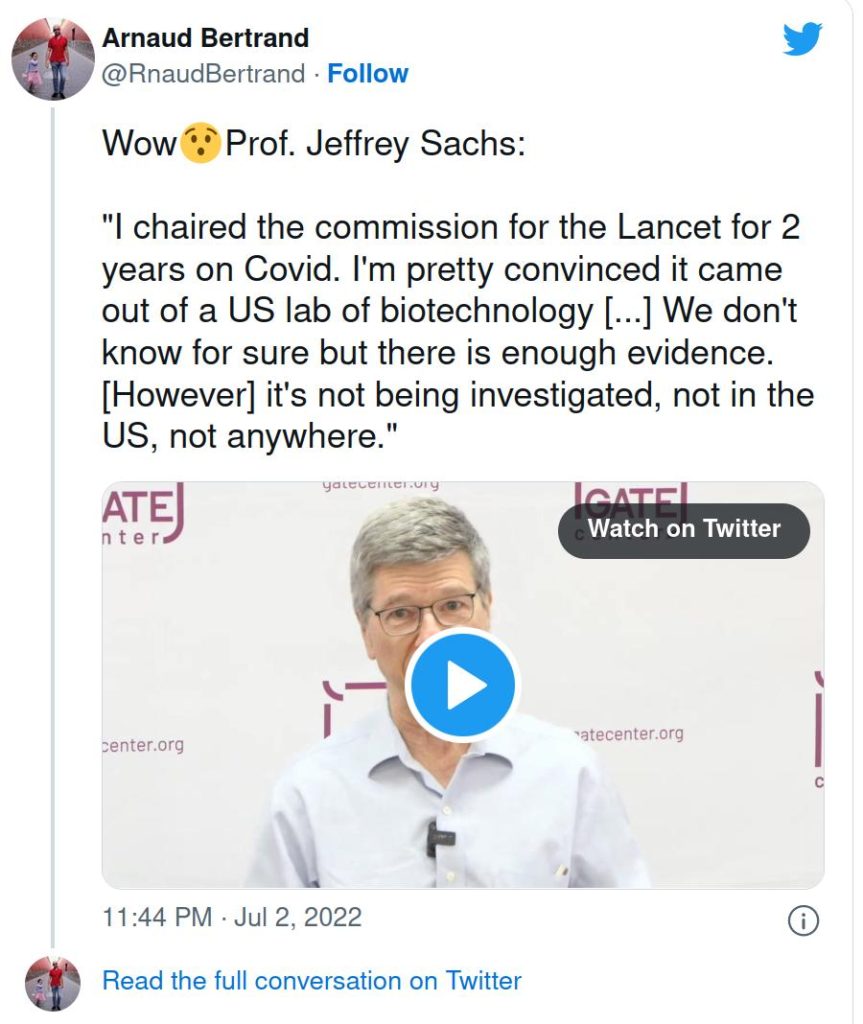
Ron Unz has written an EXCELLENT article on this subject. I strongly recommend you read it, if you are so inclined and want secondary confirmation that the USA is the culprit behind the world-wide bio-weapon attack. Article HERE.
Putin extends fast-track Russian citizenship to all Ukraine
Russian President Vladimir Putin signed a decree on Monday expanding a fast-track procedure to receive Russian citizenship to all Ukrainians, in yet another effort to expand Moscow’s influence in war-torn Ukraine.
From HERE
Stunning Illustrations By Michal Lisowski That Will Make You Think How Fragile Our Life Is

Gorgeous and distinct illustration and digital paintings by the Polish artist Michal Lisowski based in Warsaw. Michal paints in both traditional and digital ways working already for clients like Ubisoft, Disney or NVIDIA. We are very glad to can present you some of his works and please have a look at his incredible portfolio.











Michael Hudson: The End of Western Civilization – Why It Lacks Resilience, and What Will Take Its Place
Yves here. Below is the text of a new Micael Hudson speech for China’s Global University, which he delivered Monday morning. It’s already gotten 200,000 views in China and is getting coverage in the Chinese press. It focuses on how neoliberalism is a major culprit in the West’s wrong turn. Michael has graciously given us the first English transcript.
By Michael Hudson, a research professor of Economics at University of Missouri, Kansas City, and a research associate at the Levy Economics Institute of Bard College. His latest book is The Destiny of Civilization. Originally published at his website
The greatest challenge facing societies has always been how to conduct trade and credit without letting merchants and creditors make money by exploiting their customers and debtors. All antiquity recognized that the drive to acquire money is addictive and indeed tends to be exploitative and hence socially injurious. The moral values of most societies opposed selfishness, above all in the form of avarice and wealth addiction, which the Greeks called philarguria– love of money, silver-mania. Individuals and families indulging in conspicuous consumption tended to be ostracized, because it was recognized that wealth often was obtained at the expense of others, especially the weak.
The Greek concept of hubrisinvolved egotistic behavior causing injury to others. Avarice and greed were to be punished by the justice goddess Nemesis, who had many Near Eastern antecedents, such as Nanshe of Lagash in Sumer, protecting the weak against the powerful, the debtor against the creditor.
That protection is what rulers were expected to provide in serving the gods.That is why rulers were imbued with enough power to protect the population from being reduced to debt dependency and clientage. Chieftains, kings and temples were in charge of allocating credit and crop-land to enable smallholders to serve in the army and provide corvée labor. Rulers who behaved selfishly were liable to be unseated, or their subjects might run away, or support rebel leaders or foreign attackers promising to cancel debts and redistribute land more equitably.
The most basic function of Near Eastern kingship was to proclaim “economic order,” misharumand andurarumclean slate debt cancellations, echoed in Judaism’s Jubilee Year. There was no “democracy” in the sense of citizens electing their leaders and administrators, but “divine kingship” was obliged to achieve the implicit economic aim of democracy: “protecting the weak from the powerful.”
Royal power was backed by temples and ethical or religious systems. The major religions that emerged in the mid-first millennium BC, those of Buddha, Lao-Tzu and Zoroaster, held that personal drives should be subordinate to the promotion of overall welfare and mutual aid.
What did notseem likely 2500 years ago was that a warlord aristocracy would conquer the Western world. In creating what became the Roman Empire, an oligarchy took control of the land and, in due course, the political system. It abolished royal or civic authority, shifted the fiscal burden onto the lower classes, and ran the population and industry into debt.
This was done on a purely opportunistic basis. There was no attempt to defend this ideologically. There was no hint of an archaic Milton Friedman emerging to popularize a radical new moral order celebrating avarice by claiming that greed is what drives economies forward, not backward, convincing society to leave the distribution of land and money to “the market” controlled by private corporations and money-lenders instead of communalistic regulation by palace rulers and temples – or by extension, today’s socialism. Palaces, temples and civic governments were creditors. They were not forced to borrow to function, and so were not subjected to the policy demands of a private creditor class.
But running the population, industry and even governments into debt to an oligarchic elite is precisely what has occurred in the West, which is now trying to impose the modern variant of this debt-based economic regime – U.S.-centered neoliberal finance capitalism – on the entire world. That is what today’s New Cold War is all about.
By the traditional morality of early societies, the West – starting in classical Greece and Italy around the 8thcentury BC – was barbarian. The West was indeed on the periphery of the ancient world when Syrian and Phoenician traders brought the idea of interest-bearing debt from the Near East to societies that had no royal tradition of periodic debt cancellations. The absence of a strong palace power and temple administration enabled creditor oligarchies to emerge throughout the Mediterranean world.
Greece ended up being conquered first by oligarchic Sparta, then by Macedonia and finally by Rome. It is the latter’s avaricious pro-creditor legal system that has shaped subsequent Western civilization. Today, a financialized system of oligarchic control whose roots lead back to Rome is being supported and indeed imposed by U.S. New Cold War diplomacy, military force and economic sanctions on countries seeking to resist it.
Classical Aantiquity’s Oligarchic Ttakeover
In order to understand how Western Civilization developed in a way that contained the fatal seeds of its own economic polarization, decline and fall, it is necessary to recognize that when classical Greece and Rome appear in the historical record aDark Age had disrupted economic life from the Near East to the eastern Mediterranean from 1200 to about 750 BC. Climate change apparently caused severe depopulation, ending Greece’s Linear B palace economies, and life reverted to the local level during this period.
Some families created mafia-like autocracies by monopolizing the land and tying labor to it by various forms of coercive clientage and debt. Above all was the problem of interest-bearing debt that the Near Eastern traders had brought to the Aegean and Mediterranean lands – without the corresponding check of royal debt cancellations.
Out of thissituation Greek reformer-“tyrants” arose in the 7thand 6thcenturies BC from Sparta to Corinth, Athens and Greek islands. The Cypselid dynasty in Corinth and similar new leaders in other cities are reported to have cancelled the debts that held clients in bondage on the land, redistributed this land to the citizenry, and undertaken public infrastructure spending to build up commerce, opening the way for civic development and the rudiments of democracy. Sparta enacted austere “Lycurgan” reforms against conspicuous consumption and luxury. The poetry of Archilochus on the island of Paros and Solon of Athens denounced the drive for personal wealth as addictive, leading to hubris injuring others – to be punished by the justice goddess Nemesis. The spirit was similar to Babylonian, Judaic and other moral religions.
Rome had a legendary seven kings (753-509 BC), who are said to have attracted immigrants and prevented an oligarchy from exploiting them. But wealthy families overthrew the last king. There was no religious leader to check their power, as the leading aristocratic families controlled the priesthood. There were no leaders who combined domestic economic reform with a religious school, and there was no Western tradition of debt cancellations such as Jesus would advocate in trying to restore the Jubilee Year to Judaic practice. There were many Stoic philosophers, and religious amphictyonic sites such as Delphi and Delos expressed a religion of personal morality to avoid hubris.
Rome’s aristocrats created an anti-democratic constitution and Senate, and laws that made debt bondage – and the consequent loss of land – irreversible.Although the “politically correct” ethic was to avoid engaging in commerce and moneylending, this ethic did not prevent an oligarchy from emerging to take over the land and reduce much of the population to bondage. By the 2ndcentury BC Rome conquered the entire Mediterranean region and Asia Minor, and the largest corporations were the publican tax collectors, who are reported to have looted Rome’s provinces.
There always have been ways for the wealthy to act sanctimoniously in harmony with altruistic ethics eschewing commercial greed while enriching themselves. Western antiquity’s wealthy were able to come to terms with such ethics by avoiding direct lending and trading themselves, assigning this “dirty work” to their slaves or freemen, and by spending the revenue from such activities on conspicuous philanthropy (which became an expected show in Rome’s election campaigns). And after Christianity became the Roman religion in the 4thcentury AD, money was able to buy absolution by suitably generous donations to the Church.
Rome’s Legacy and the West’s Financial Imperialism
What distinguishes Western economies from earlier Near Eastern and most Asian societies is the absence of debt relief to restore economy-wide balance. Every Western nation has inherited from Rome the pro-creditor sanctity of debt principles that prioritize the claims of creditors and legitimize the permanent transfer to creditors of the property of defaulting debtors. From ancient Rome to Habsburg Spain, imperial Britain and the United States, Western oligarchies have appropriated the income and land of debtors, while shifting taxes off themselves onto labor and industry. This has caused domestic austerity and led oligarchies to seek prosperity through foreign conquest, to gain from foreigners what is not being produced by domestic economies driven into debt and subject to pro-creditor legal principles transferring land and other property to a rentierclass.
Spain in the 16thcentury looted vast shiploads of silver and gold from the New World, but this wealth flowed through its hands, dissipated on war instead of being invested in domestic industry. Left with a steeply unequal and polarized economy deeply in debt, the Habsburgs lost their former possession, the Dutch Republic, which thrived as the less oligarchic society and one deriving more power as a creditor than as a debtor.
Britain followed a similar rise and fall. World War I left it with heavy arms debts owed to its own former colony, the United States. Imposing anti-labor austerity at home in seeking to pay these debts, Britain’s sterling area subsequently became a satellite of the U.S. dollar under the terms of American Lend-Lease in World War II and the 1946 British Loan. The neoliberal policies of Margaret Thatcher and Tony Blair sharply increased the cost of living by privatizing and monopolizing public housing and infrastructure, wiping out Britain’s former industrial competitiveness by raising the cost of living and hence wage levels.
The United States has followed a similar trajectory of imperial overreaching at the cost of its domestic economy. Its overseas military spending from 1950 onwards forced the dollar off gold in 1971. That shift had the unanticipated benefit of ushering in a “dollar standard” that has enabled the U.S. economy and its military diplomacy to get a free ride from the rest of the world, by running up dollar debt to other nation’s central banks without any practical constraint.
The financial colonization of the post-Soviet Union in the 1990s by the “shock therapy” of privatization giveaways, followed by China’s admission to the World Trade Organization in 2001 – with the expectation that China would, like Yeltsin’s Russia, become a U.S. financial colony – led America’s economy to deindustrialize by shifting employment to Asia. Trying to force submission to U.S. control by inaugurating today’s New Cold War has led Russia, China and other countries to break away from the dollarized trade and investment system, leaving the United States and NATO Europe to suffer austerity and deepening wealth inequality as debt ratios are soaring for individuals, corporations and government bodies.
It was only a decade ago that Senator John McCain and President Barack Obama characterized Russia as merely a gas station with atom bombs. That could now just as well be said of the United States, basing its world economic power on control of the West’s oil trade, while its main export surpluses are agricultural crops and arms. The combination of financial debt leveraging and privatization has made America a high-cost economy, losing its former industrial leadership, much like Britain did. The United States is now attempting to live mainly off financial gains (interest, profits on foreign investment and central bank credit creation to inflate capital gains) instead of creating wealth through its own labor and industry. Its Western allies seek to do the same. They euphemize this U.S.-dominated system as “globalization,” but it is simply a financial form of colonialism – backed with the usual military threat of force and covert “regime change” to prevent countries from withdrawing from the system.
This U.S. and NATO-based imperial system seeks to indebt weaker countries and force them to turn control over their policies to the International Monetary Fund and World Bank. Obeying the neoliberal anti-labor “advice” of these institutions leads to a debt crisis that forces the debtor country’s foreign-exchange rate to depreciate. The IMF then “rescues” them from insolvency on the “conditionality” that they sell off the public domain and shift taxes off the wealthy (especially foreign investors) onto labor.
Oligarchy and debt are the defining characteristics of Western economies. America’s foreign military spending and nearly constant wars have left its own Treasury deeply indebted to foreign governments and their central banks. The United States is thus following the same path by which Spain’s imperialism left the Habsburg dynasty in debt to European bankers, and Britain’s participation in two world wars in hope of maintaining its dominant world position left it in debt and ended its former industrial advantage. America’s rising foreign debt has been sustained by its “key currency” privilege of issuing its own dollar-debt under the “dollar standard” without other countries having any reasonable expectation of ever being paid – except in yet more “paper dollars.”
This monetary affluence has enabled Wall Street’s managerial elite to increase America’s rentieroverhead by financialization and privatization, increasing the cost of living and doing business, much as occurred in Britain under the neoliberal policies of Margaret Thatcher and Tony Blair. Industrial companies have responded by shifting their factories to low-wage economies to maximize profits. But as America deindustrializes with rising import dependency on Asia, U.S. diplomacy is pursuing a New Cold War that is driving the world’s most productive economies to decouple from the U.S. economic orbit.
Rising debt destroys economies when it is not being used to finance new capital investment in means of production. Most Western credit today is created to inflate stock, bond and real estate prices, not to restore industrial ability. As a result of this debt-without-production approach, the U.S. domestic economy has been overwhelmed by debt owed to its own financial oligarchy. Despite America’s economy’s free lunch in the form of the continued run-up of its official debt to foreign central banks – with no visible prospect of either its international or domestic debt being paid – its debt continues to expand and the economy has become even more debt-leveraged. America has polarized with extreme wealth concentrated at the top while most of the economy is driven deeply into debt.
The Failure of Oligarchic Democracies to Protect the Indebted Population at Large
What has made the Western economies oligarchic is their failure to protect the citizenry from being driven into dependency on a creditor property-owning class. These economies have retained Rome’s creditor-based laws of debt, most notably the priority of creditor claims over the property of debtors. The creditor One Percent has become a politically powerful oligarchy despite nominal democratic political reforms expanding voting rights. Government regulatory agencies have been captured and taxing power has been made regressive, leaving economic control and planning in the hands of a rentierelite.
Rome never was a democracy. And in any case, Aristotle recognized democracies as evolving more or less naturally into oligarchies – which claim to be democratic for public-relations purposes while pretending that their increasingly top-heavy concentration of wealth is all for the best. Today’s trickle-down rhetoric depicts banks and financial managers as steering savings in the most efficient way to produce prosperity for the entire economy, not just for themselves.
President Biden and his State Department neoliberals accuse China and any other country seeking to maintain its economic independence and self-reliance of being “autocratic.” Their rhetorical sleight of hand juxtaposes democracy to autocracy. What they call “autocracy” is a government strong enough to prevent a Western-oriented financial oligarchy from indebting the population to itself – and then prying away its land and other property into its own hands and those of its American and other foreign backers.
The Orwellian Doublethink of calling oligarchies “democracies” is followed by defining a free market as one that is free for financial rent-seeking. U.S.-backed diplomacy has indebted countries, forcing them to sell control of their public infrastructure and turn their economy’s “commanding heights” into opportunities to extract monopoly rent.
This autocracy vs. democracy rhetoric is similar to the rhetoric that Greek and Roman oligarchies used when they accused democratic reformers of seeking “tyranny” (in Greece) or “kingship” (in Rome). It was the Greek “tyrants” who overthrow mafia-like autocracies in the 7thand 6thcenturies BC, paving the way for the economic and proto-democratic takeoffs of Sparta, Corinth and Athens. And it was Rome’s kings who built up their city-state by offering self-support land tenure for citizens. That policy attracted immigrants from neighboring Italian city-states whose populations were being forced into debt bondage.
The problem is that Western democracies have not proved adept at preventing oligarchies from emerging and polarizing the distribution of income and wealth. Ever since Rome, oligarchic “democracies” have not protected their citizens from creditors seeking to appropriate land, its rental yield and the public domain for themselves.
If we ask just who today is enacting and enforcing policies that seek to check oligarchy in order to protect the livelihood of citizens, the answer is that this is done by socialist states. Only a strong state has the power to check a financial and rent-seeking oligarchy. The Chinese embassy in America demonsrated this in its reply to President Biden’s description of China as an autocracy:
Clinging to a Cold War mentality and the hegemon’s logic, the US pursues bloc politics, concocts the “democracy versus authoritarianism” narrative … and ramps up bilateral military alliances, in a clear attempt at countering China.
Guided by a people-centered philosophy, since the day when it was founded … the Party has been working tirelessly for the interest of the people, and has dedicated itself to realizing people’s aspirations for a better life. China has been advancing whole-process people’s democracy, promoting legal safeguard for human rights, and upholding social equity and justice. The Chinese people now enjoy fuller and more extensive and comprehensive democratic rights.[1]
Nearly all early non-Western societies had protections against the emergence of mercantile and rentieroligarchies. That is why it is so important to recognize that what has become Western civilization represents a break from the Near East, South and East Asia. Each of these regions had its own system of public administration to save its social balance from commercial and monetary wealth that threatened to destroy economic balance if left unchecked. But the West’s economic character was shaped by rentieroligarchies. Rome’s Republic enriched its oligarchy by stripping the wealth of the regions it conquered, leaving them impoverished. That remains the extractive strategy of subsequent European colonialism and, most recently, U.S.-centered neoliberal globalization. The aim always has been to “free” oligarchies from constraints on their self-seeking.
The great question is, “freedom” and “liberty” for whom? Classical political economy defined a free market as one free fromunearned income, headed by land rent and other natural-resource rent, monopoly rent, financial interest and related creditor privileges. But by the end of the 19thcentury the rentieroligarchy sponsored a fiscal and ideological counter-revolution, re-defining a free market as one free for rentiers to extract economic rent – unearned income.
This rejection of the classical critique of rentierincome has been accompanied by re-defining “democracy” to require having a “free market” of the anti-classical oligarchic rentiervariety. Instead of the government being the economic regulator in the public interest, public regulation of credit and monopolies is dismantled. That lets companies charge whatever they want for the credit they supply and the products they sell. Privatizing the privilege of creating credit-money lets the financial sector take over the role of allocating property ownership.
The result has been to centralize economic planning in Wall Street, the City of London, the Paris Bourse and other imperial financial centers. That is what today’s New Cold War is all about: protecting this system of U.S.-centered neoliberal financial capitalism, by wrecking or isolating the alternative systems of China, Russia and their allies, while seeking to further financialize the former colonialist system sponsoring creditor power instead of protecting debtors, imposing debt-ridden austerity instead of growth, and making the loss of property through foreclosure or forced sale irreversible.
Is Western Civilization a Long Detour from Where Antiquity Seemed To Be Headed?
What is so important in Rome’s economic polarization that resulted from the dynamics of interest bearing debt in the rapacious hands of its creditor class is how radically its oligarchic pro-creditor legal system differed from the laws of earlier societies that checked creditors and the proliferation of debt. The rise of a creditor oligarchy that used its wealth to monopolize the land and take over the government and courts (not hesitating to use force and targeted political assassination against would-be reformers) had been prevented for thousands of years throughout the Near East and other Asian lands. But the Aegean and Mediterranean periphery lacked the economic checks and balances that had provided resilience elsewhere in the Near East. What has distinguished the West from the outset has been its lack of a government strong enough to check the emergence and domination of a creditor oligarchy.
All ancient economies operated on credit, running up crop debts during the agricultural year. Warfare, droughts or floods, disease and other disruptions often prevented the accrual of debts from being paid. But Near Eastern rulers cancelled debts under these conditions. That saved their citizen-soldiers and corvée-workers from losing their self-support land to creditors, who were recognized as being a potential rival power to the palace. By the mid-first millennium BC debt bondage had shrunk to only a marginal phenomenon in Babylonia, Persia and other Near Eastern realms. But Greece and Rome were in the midst of a half-millennium of popular revolts demanding debt cancellation and liberty from debt bondage and loss of self-support land.
It was only Roman kings and Greek tyrants who, for a while, were able to protect their subjects from debt bondage. But they ultimately lost to warlord creditor oligarchies. The lesson of history is thus that a strong government regulatory power is required to prevent oligarchies from emerging and using creditor claims and land grabbing to turn the citizenry into debtors, renters, clients and ultimately serfs.
The Rise of Creditor Control Over Modern Governments
Palaces and temples throughout the ancient world were creditors. Only in the West did a private creditor class emerge. A millennium after the fall of Rome, a new banking class obliged medieval kingdoms to run into debt. International banking families used their creditor power to gain control of public monopolies and natural resources, much as creditors had gained control of individual land in antiquity.
World War I saw the Western economies reach an unprecedented crisis as a result of Inter-Ally debts and German reparations. Trade broke down and the Western economies fell into depression. What pulled them out was World War II, and this time no reparations were imposed after the war ended. In place of war debts, England simply was obliged to open up its Sterling Area to U.S. exporters and refrain from reviving its industrial markets by devaluing sterling, under the terms of Lend-Lease and the 1946 British Loan as noted above.
The West emerged from World War II relatively free of private debt – and thoroughly under U.S. dominance. But since 1945 the volume of debt has expanded exponentially, reaching crisis proportions in 2008 as the junk-mortgage bubble, massive bank fraud and financial debt pyramiding exploded, overburdening the U.S. as well as the European and Global South economies.
The U.S. Federal Reserve Bank monetized $8 trillion to save the financial elite’s holdings of stocks, bonds and packaged real estate mortgages instead of rescuing the victims of junk mortgages and over-indebted foreign countries. The European Central Bank did much the same thing to save the wealthiest Europeans from losing the market value of their financial wealth.
But it was too late to save the U.S. and European economies. The long post-1945 debt buildup has run its course. The U.S. economy has been deindustrialized, its infrastructure is collapsing and its population is so deeply indebted that little disposable income is left to support living standards. Much as occurred with Rome’s Empire, the American response is to try to maintain the prosperity of its own financial elite by exploiting foreign countries. That is aim of today’s New Cold War diplomacy. It involves extracting economic tribute by pushing foreign economies further into dollarized debt, to be paid by imposing depression and austerity on themselves.
This subjugation is depicted by mainstream economists as a law of nature and hence as an inevitable form of equilibrium, in which each nation’s economy receives “what it is worth.” Today’s mainstream economic models are based on the unrealistic assumption that all debts can be paid, without polarizing income and wealth. All economic problems are assumed to be self-curing by “the magic of the marketplace,” without any need for civic authority to intervene. Government regulation is deemed inefficient and ineffective, and hence unnecessary. That leaves creditors, land-grabbers and privatizers with a free hand to deprive others of theirfreedom. This is depicted as the ultimate destiny of today’s globalization, and of history itself.
The End of History? Or Just of the West’s Financialization and Privatization?
The neoliberal pretense is that privatizing the public domain and letting the financial sector take over economic and social planning in targeted countries will bring mutually beneficial prosperity. That is supposed to make foreign submission to the U.S.-centered world order voluntary. But the actual effect of neoliberal policy has been to polarize Global South economies and subject them to debt-ridden austerity.
American neoliberalism claims that America’s privatization, financialization and shift of economic planning from government to Wall Street and other financial centers is the result of a Darwinian victory achieving such perfection that it is “the end of history.” It is as if the rest of the world has no alternative but to accept U.S. control of the global (that is, neo-colonial) financial system, trade and social organization. And just to make sure, U.S. diplomacy seeks to back its financial and diplomatic control by military force.
The irony is that U.S. diplomacy itself has helped accelerate an international response to neoliberalism by forcing together governments strong enough to pick up the long trend of history that sees governments empowered to prevent corrosive oligarchic dynamics from derailing the progress of civilization.
The 21stcentury began with American neoliberals imagining that their debt-leveraged financialization and privatization would cap the long upsweep of human history as the legacy of classical Greece and Rome. The neoliberal view of ancient history echoes that of antiquity’s oligarchies, denigrating Rome’s kings and Greece’s reformer-tyrants as threatening too strong a public intervention when they aimed at keeping citizens free of debt bondage and securing self-support land tenure. What is viewed as the decisive takeoff point is the oligarchy’s “security of contracts” giving creditors the right to expropriate debtors. This indeed has remained a defining characteristic of Western legal systems for the past two thousand years.
A real end of history would mean that reform would stop in every country. That dream seemed close when U.S. neoliberals were given a free hand to reshape Russia and other post-Soviet states after the Soviet Union dissolved itself in 1991, starting with shock therapy privatizing natural resources and other public assets in the hands of Western-oriented kleptocrats registering public wealth in their own names – and cashing out by selling their takings to U.S. and other Western investors.
The end of the Soviet Union’s history was supposed to consolidate America’s End of History by showing how futile it would be for nations to try to create an alternative economic order based on public control of money and banking, public health, free education and other subsidies of basic needs, free from debt financing. China’s admission into the World Trade Organization in 2001 was viewed as confirming Margaret Thatcher’s claim that There Is No Alternative (TINA) to the new neoliberal order sponsored by U.S. diplomacy.
There is an economic alternative, of course. Looking over the sweep of ancient history, we can see that the main objective of ancient rulers from Babylonia to South Asia and East Asia was to preventa mercantile and creditor oligarchy from reducing the population at large to clientage, debt bondage and serfdom. If the non-U.S. Eurasian world now follows this basic aim, it would be restoring the course of history to its pre-Western course. That would not be the end of history, but it would return to the non-Western world’s basic ideals of economic balance, justice and equity.
Today, China, India, Iran and other Eurasian economies have taken the first step as a precondition for a multipolar world, by rejecting America’s insistence that they join the U.S. trade and financial sanctions against Russia. These countries realize that if the United States could destroy Russia’s economy and replace its government with U.S.-oriented Yeltsin-like proxies, the remaining countries of Eurasia would be next in line.
The only possible way for history really to end would be for the American military to destroy every nation seeking an alternative to neoliberal privatization and financialization. U.S. diplomacy insists that history must not take any path that would not culminate in its own financial empire ruling through client oligarchies. American diplomats hope that their military threats and support of proxy armies will force other countries to submit to neoliberal demands – to avoid being bombed, or suffering “color revolutions,” political assassinations and army takeovers, Pinochet-style. But the only real way to bring history to an end is by atomic war to end human life on this planet.
The New Cold War Is Dividing the World into Two Contrasting Economic Systems
NATO’s proxy war in Ukraine against Russia is the catalyst fracturing the world into two opposing spheres with incompatible economic philosophies. China, the country growing most rapidly, treats money and credit as a public utility allocated by government instead of letting the monopoly privilege of credit creation be privatized by banks, leading to them displacing government as economic and social planner. That monetary independence, relying on its own domestic money creation instead of borrowing U.S. electronic dollars, and denominating foreign trade and investment in its own currency instead of in dollars, is seen as an existential threat to America’s control of the global economy.
U.S. neoliberal doctrine calls for history to end by “freeing” the wealthy classes from a government strong enough to prevent the polarization of wealth, and ultimate decline and fall. Imposing trade and financial sanctions against Russia, Iran, Venezuela and other countries that resist U.S. diplomacy, and ultimately military confrontation, is how America intends to “spread democracy” by NATO from Ukraine to the China Sea.
The West, in its U.S. neoliberal iteration, seems to be repeating the pattern of Rome’s decline and fall. Concentrating wealth in the hands of the One Percent has always been the trajectory of Western civilization. It is a result of classical antiquity having taken a wrong track when Greece and Rome allowed the inexorable growth of debt, leading to the expropriation of much of the citizenry and reducing it to bondage to a land-owning creditor oligarchy. That is the dynamic built into the DNA of what is called the West and its “security of contracts” without any government oversight in the public interest. By stripping away prosperity at home, this dynamic requires a constant reaching out to extract an economic affluence (literally a “flowing in”) at the expense of colonies or debtor countries.
The United States through its New Cold War is aiming at securing precisely such economic tribute from other countries. The coming conflict may last for perhaps twenty years and will determine what kind of political and economic system the world will have. At issue is more than just U.S. hegemony and its dollarized control of international finance and money creation. Politically at issue is the idea of “democracy” that has become a euphemism for an aggressive financial oligarchy seeking to impose itself globally by predatory financial, economic and political control backed by military force.
As I have sought to emphasize, oligarchic control of government has been the distinguishing feature of Western civilization ever since classical antiquity. And the key to this control has been opposition to strong government – that is, civil government strong enough to prevent a creditor oligarchy from emerging and monopolizing control of land and wealth, making itself into a hereditary aristocracy, a rentierclass living off land rents, interest and monopoly privileges that reduce the population at large to austerity.
The unipolar U.S.-centered order hoping to “end history” reflected a basic economic and political dynamic that has been a characteristic of Western civilization ever since classical Greece and Rome set off along a different track from the Near Eastern matrix in the first millennium BC.
To save themselves from being swept into the whirlpool of economic destruction now engulfing the West, countries in the world’s rapidly growing Eurasian core are developing new economic institutions based on an alternative social and economic philosophy. With China being the largest and fastest growing economy in the region, its socialist policies are likely to be influential in shaping this emerging non-Western financial and trading system.
Instead of the West’s privatization of basic economic infrastructure to create private fortunes through monopoly rent extraction, China keeps this in public hands. Its great advantage over the West is that it treats money and credit as a public utility, to be allocated by government instead of letting private banks create credit, with debt mounting up without expanding production to raise living standards. China also is keeping health and education, transportation and communications in public hands, to be provided as basic human rights.
China’s socialist policy is in many ways a return to basic ideas of resilience that characterized most civilization before classical Greece and Rome.
It has created a state strong enough to resist the emergence of a financial oligarchy gaining control of the land and rent-yielding assets.
In contrast, today’s Western economies are repeating precisely that oligarchic drive that polarized and destroyed the economies of classical Greece and Rome, with the United States serving as the modern analogue (for Rome).
1940s Guide Shows How To Kiss Correctly

LIFE magazine published this guide for actors in 1942, but it may still come in handy today. According to these romantic pictures from the magazine, there are some vital basic steps to follow to achieve the perfect clinch. First, the how-to guide recommends that kissers should not stand too far apart – pointing out that actors doing this on stage look ‘juvenile if they are so stand-offish’.



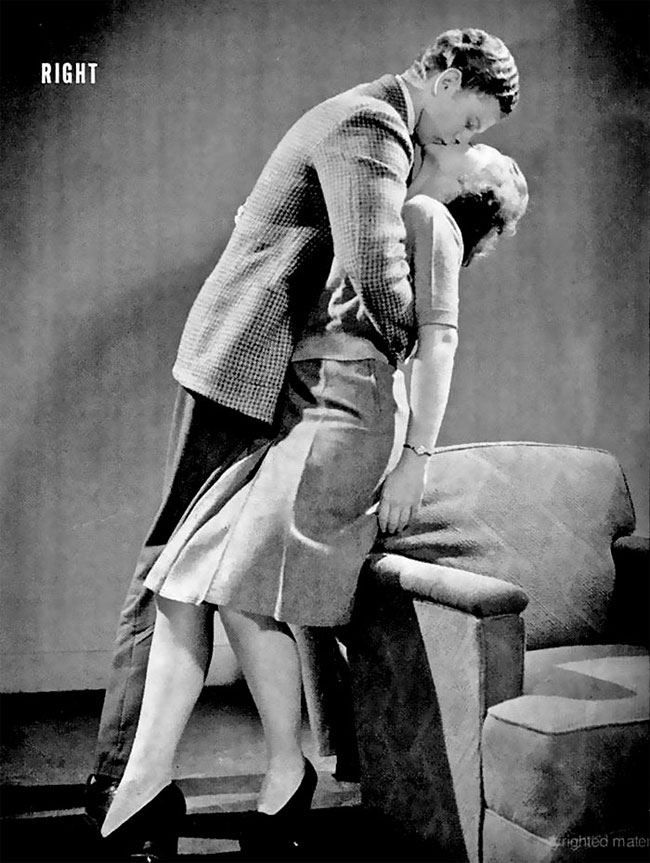
“RIGHT: Girl should sit on arm of the chair and boy should hold her firmly but lightly”
Watch: NYC Unleash Nuclear-Attack Preparedness PSA
With COVID-anxiety having waned, America’s leaders need something to stoke the fear and make us more malleable.
In the case of New York City, it appears they turned the fearmongery up to ’11’ this week as they launched a nuclear attack preparedness public service announcement, saying it’s best to be prepared even if such a strike is unlikely.
“While the likelihood of a nuclear weapon incident occurring in/near New York City is very low, it is important New Yorkers know the steps to stay safe,” the city’s Emergency Management Department said in its announcement.
According to the PSA, there are three important steps to take – just do as you’re told and “get inside” a building fast and move away from windows, “stay inside” while removing and bagging all outer clothing to keep radioactive dust or ash away from your body, and “stay tuned” for the ‘experts’ and ‘officials’ to tell you what to do.
Oh, and don’t forget to wear your snugly-fitting N95 mask if you are forced inside a building in close confines with other humans… you can’t be too safe, right?
As Audacy reports, Emergency Management didn’t say if any factor in particular prompted the new PSA, but Commissioner Zach Iscol said in a statement, “As the threat landscape continues to evolve, it is important that New Yorkers know we are preparing for any imminent threats and are providing them with the resources they need to stay safe and informed.”
Watch the full PSA below:
Be afraid America, be very afraid…
Now An Outbreak Of The Marburg Virus Has Begun
Authored by Michael Snyder via The Economic Collapse blog,
Why are so many unusual outbreaks of disease suddenly happening all over the planet? We were already dealing with a seemingly endless global pandemic coming into 2022, and so far this year a bird flu pandemic has resulted in the deaths of tens of millions of our chickens and turkeys, the worst monkeypox outbreak in history has spread like wildfire in the western world, and now it is being reported that there is an outbreak of the Marburg Virus in Africa. We have already lost our opportunity to contain monkeypox, and that is really bad news. But if authorities are not able to successfully contain this new Marburg outbreak, we could potentially be facing a scenario that is downright apocalyptic.
The new outbreak of the Marburg Virus is happening in Ghana. The two victims that have died so far did not know each other, and officials believe that this is evidence that “the disease is spreading more widely”…
Two people are believed to have died from the extremely deadly Marburg virus in Ghana as officials gear up for a potential outbreak. The patients, from the country’s southern Ashanti region, were not known to each other, suggesting the disease is spreading more widely. Initial tests came back positive for the virus and the samples are being reanalysed by the World Health Organization (WHO).
Global health authorities have always warned that the Marburg virus is a good candidate for a horrifying global pandemic because it can have a very long incubation period. The following information comes from the World Health Organization…
The incubation period (interval from infection to onset of symptoms) varies from 2 to 21 days. Illness caused by Marburg virus begins abruptly, with high fever, severe headache and severe malaise. Muscle aches and pains are a common feature. Severe watery diarrhoea, abdominal pain and cramping, nausea and vomiting can begin on the third day. Diarrhoea can persist for a week. The appearance of patients at this phase has been described as showing “ghost-like” drawn features, deep-set eyes, expressionless faces, and extreme lethargy.
All of that sounds terrible, but the next stage of the disease is truly nightmarish…
Many patients develop severe haemorrhagic manifestations between 5 and 7 days, and fatal cases usually have some form of bleeding, often from multiple areas. Fresh blood in vomitus and faeces is often accompanied by bleeding from the nose, gums, and vagina. Spontaneous bleeding at venepuncture sites (where intravenous access is obtained to give fluids or obtain blood samples) can be particularly troublesome. During the severe phase of illness, patients have sustained high fevers. Involvement of the central nervous system can result in confusion, irritability, and aggression. Orchitis (inflammation of one or both testicles) has been reported occasionally in the late phase of disease (15 days). In fatal cases, death occurs most often between 8 and 9 days after symptom onset, usually preceded by severe blood loss and shock.
The largest previous outbreak of the disease was in 2005.
During that outbreak, 88 percent of the victims died…
The largest outbreak to date was in Angola in 2005, when 374 caught the virus and 329 died – a fatality rate of 88 percent.
A disease that has a death rate of way less than one percent ended up paralyzing much of the planet for months on end.
So what do you think will happen if the Marburg Virus becomes a true global pandemic?
Needless to say, the panic would be off the charts, and there is no cure and no vaccine…
The Marburg virus is a top concern for public health officials who are worried about the next pandemic. It has the potential to cause serious public health emergencies but there are currently no vaccines or antiviral treatments approved to treat the virus.
Meanwhile, the number of monkeypox cases continues to rise at an exponential rate.
When I wrote about monkeypox yesterday, there were 7,534 global cases. Unfortunately, Friday was the worst day for this outbreak so far by a very wide margin, and now there are 9,109 global cases.
I had been hoping that this outbreak would fade after the initial spike of cases, but instead it seems to be rapidly picking up momentum.
Here in the United States, it has already spread to 39 different states and the total number of cases has now risen to 790.
If the number of cases continues to double at a very fast pace, it won’t be too long before we have a major national crisis on our hands.
Let us hope that doesn’t happen, because this is a disease that you definitely do not want to get.
This highly mutated version of monkeypox causes extremely intense pain. In fact, one victim that was interview by NBC News said that it was “the worst pain in my life”.
Since monkeypox causes very ugly sores on the skin, many have suggested that this sounds eerily similar to a future scenario that I described in my books.
But we don’t know if monkeypox will become a true global pandemic yet. We will just have to wait and see what happens.
Of course COVID has been a global pandemic for a long time, and now it is being reported that a new subvariant that is becoming dominant in the western world is “the worst so far”…
The latest subvariant of the novel coronavirus to become dominant in Europe, the United States, and other places is also, in many ways, the worst so far. The BA.5 subvariant of the basic Omicron variant appears to be more contagious than any previous form of the virus. It’s apparently better at dodging our antibodies, too—meaning it might be more likely to cause breakthrough and repeat infections.
Despite everything that they have tried, authorities have failed to stop this pandemic. Our planet has been hit by wave after wave, and now hospitalizations in the U.S. are spiking once again…
Eighteen states reported more cases in the week of June 30-July 7 than in the week before, according to a USA TODAY analysis of Johns Hopkins University data. That has also led to a rise in hospitalizations, with hospitals in 40 states reporting more COVID-19 patients than a week earlier. Thirty-eight states had more patients in intensive care beds, and 17 states reported more deaths than a week earlier. Personally, I am far, far more concerned about monkeypox.
If the number of monkeypox cases continues to explode like it has been, it won’t be too long before there is widespread panic among the general public.
And if the Marburg Virus starts getting loose in the western world we will be facing a scenario that is absolutely unthinkable.
So hopefully authorities in Africa are on top of this, because the death toll from a full-blown global pandemic would be off the charts.
Roast Beef
The Sunday roast has captured the imagination of anyone who wants to recreate the classic American meal, but how many of us take the time to try out this classic recipe? With slow-roasted flavors and a recipe anyone can easily tackle, taking a stab at these classic 1950s dishes should take a spot on any cook’s bucket list. Combine the roast with some sides of mashed potatoes and roasted carrots, and weekend meals are sure to transform forever.

Whatever happened to the days when the 6 p.m. dinner bell would ring and Mom would pull a beautifully browned roast from the oven? Well, plenty of things: microwaves, pizza delivery, the narrowing of the gender equality gap. Although it should be said that the pay-gap has nowhere near narrowed. So why don’t we make a new tradition with this favorite meal? Point is, we miss the roast, and there is no reason dads (and brothers, and boyfriends!) shouldn’t endeavor to make a roast beef every so often. That’s right, guys, you can do it. It’s as simple as turning on the oven, putting in the seasoned beef, and pulling it out when it’s ready. This type of roast beef recipe magic should be timeless (and genderless, too.)
You’ll Need
3 lb rump roast
8 cloves garlic, peeled and halved
2 Tbsp olive oil
1⁄2 Tbsp chopped fresh rosemary
Salt and black pepper to taste
How to Make It
- Remove the roast from the fridge at least 30 minutes before cooking.
- Preheat the oven to 250°F.
- Use a small paring knife to make incisions into the roast and gently insert garlic clove halves all over.
- Rub the roast with the olive oil and season all over with the rosemary and plenty of salt and pepper.
- Place on a rack on a baking sheet and place in the middle rack of the oven.
- Roast for 90 minutes.
- Turn up the heat to 475°F and roast for another 15 minutes, until the beef has developed a deep-brown crust and an instant-read thermometer inserted in the thickest part registers 140°F.
Eat This Tip
No baking rack? No problem. Many recipes call for baking racks to allow the warm air to fully circulate around the meat, but you can simulate the effect very simply with no extra equipment.
- Position one oven rack in the middle of the oven and another immediately below it.
- Prep and season the meat, then place it directly on the middle rack.
- Place a rimmed baking sheet below to catch the juices as they fall from the meat. (Those precious juices can be turned into gravy with a bit of flour and broth!)
Michael Hudson: The End of Western Civilization
Let me recommend to everyone the speech Michael Hudson has held on Monday for China’s Global University. It digs to the core of the illness that has taken over ‘western’ societies.
The issue is debt which historically was largely forgiven by the king or high priest in case of hard times. But during the time of the Greek and later Roman empires oligarchs took over and demanded to pay back all debt in full and even in hard times. This split societies into a rich rentier class and indebted plebs. Each empire that followed that path, from the Roman to the British one, eventually came down due to over-indebtedness.
The U.S. is the current global empire which is way down on this path. It is hostile to all societies that do not open their financial markets to be robbed by U.S. oligarchs. This is at the core of the current global conflict as China, Russia, Iran and Venezuela developed from different traditions and reject to give in to U.S. demands. The U.S. is used to solve such ‘problems’ by force but is now likely too weak to achieve that.
Naked Capitalism is the first to publish the English language version of Hudson’s speech:
Michael Hudson: The End of Western Civilization – Why It Lacks Resilience, and What Will Take Its Place
The core paragraphs are probably these:
The United States through its New Cold War is aiming at securing precisely such economic tribute from other countries. The coming conflict may last for perhaps twenty years and will determine what kind of political and economic system the world will have. At issue is more than just U.S. hegemony and its dollarized control of international finance and money creation. Politically at issue is the idea of “democracy” that has become a euphemism for an aggressive financial oligarchy seeking to impose itself globally by predatory financial, economic and political control backed by military force. As I have sought to emphasize, oligarchic control of government has been the distinguishing feature of Western civilization ever since classical antiquity. And the key to this control has been opposition to strong government – that is, civil government strong enough to prevent a creditor oligarchy from emerging and monopolizing control of land and wealth, making itself into a hereditary aristocracy, a rentierclass living off land rents, interest and monopoly privileges that reduce the population at large to austerity.
It will be necessary to bring down the rentierclass. To recommit to a strong state that owns the public goods and services and does not hand them over to private interests. The coming malaise may well help to achieve that.
Russian Ministry of Defense: “We are on the verge of an immediate armed conflict with the United States”
The Russian Ministry of Defense issued a very late night Press Statement saying “We are on the verge of an immediate armed conflict with the United States” after Ukraine used U.S.-supplied HIMARS weapons to attack a Russian base. As of 7:12 PM EDT, at least 7 Russian troops are dead and at least 40 are injured. Those numbers are rapidly rising and changing fast.
In addition to the Russian MoD, the Russian Ministry of Foreign Affairs has also issued a statement:
The United States and its allies are teetering on the brink of an open military conflict with Moscow, which would be fraught with nuclear tensions, Russian Foreign Ministry Spokeswoman Maria Zakharova said in a statement on Tuesday.
“After provoking an escalation of the Ukrainian crisis and unleashing a violent hybrid confrontation with Russia, Washington and its allies are dangerously teetering on the brink of an open military confrontation with our country, which means a direct armed conflict between nuclear powers. Clearly, such a confrontation would be fraught with nuclear escalation,” the statement reads.
UPDATE 7:19 PM EDT —
Henry Kissinger just said on Fox News that we should expect direct conflict with Russia by mId-August.
Do you want more?
You can find more articles related to this in my latest index; A New Beginning. And in it are elements of the old, some elements regarding the transition, and some elements that look towards the future.
New Beginnings 4.
Articles & Links
Master Index.
- You can start reading the articles by going HERE.
- You can visit the Index Page HERE to explore by article subject.
- You can also ask the author some questions. You can go HERE to find out how to go about this.
- You can find out more about the author HERE.
- If you have concerns or complaints, you can go HERE.
- If you want to make a donation, you can go HERE.
.

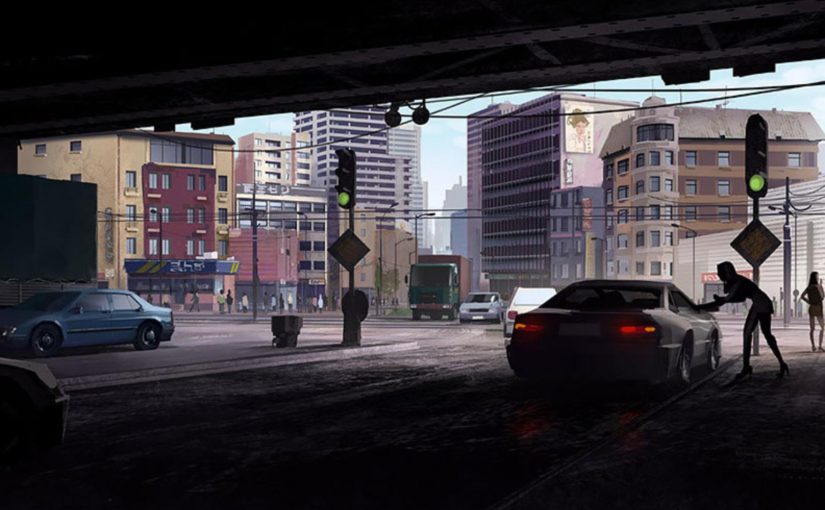

Love the drawings, the Great Patriotic War examples are excellent. The Xmas image of the old and the young and the female fighter pilot with a Night Witch ( her PO 2 is in the back ground behind the FP,s Yak). I also like the striped down Cosmonaught image, it looks like Mars. It’s good to be back on deck after a dose of Covid. Cheers to all.
This post should be required reading for all westerners. Especially those in government and finance.
I used to think Michael Snyder’s writings were a bit over the top. Needless to say, I don’t think that way anymore.
In the past, if I wanted a real scare, I’d read The Book of Revelation. Now, all I have to do is read about in some media format or another. One must admit the striking similarities with what John wrote and what is going on in the world now.